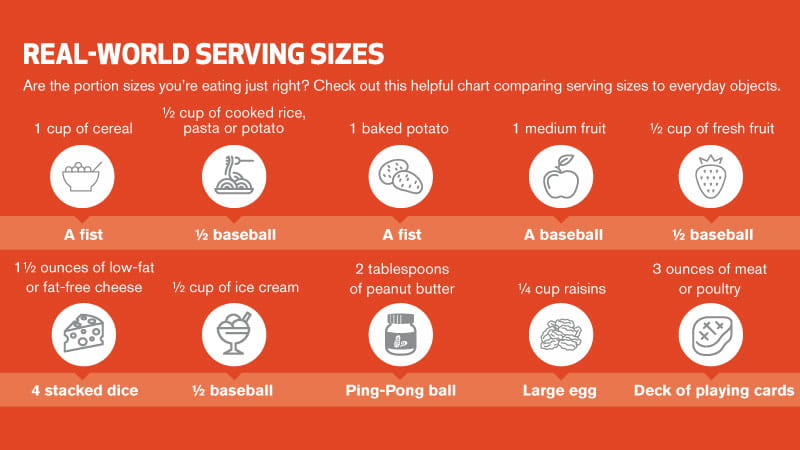Controlling your weight calls for choosing a healthy variety of foods and watching how much and how often you eat. But how? To start, it’s helpful to know the difference between a portion and a serving size.
The skinny on serving sizes
“A portion is how much food you eat at one time, while a serving size is the standardized amount of food — such as cups or pieces and grams or ounces — that appears on the Nutrition Facts label on most packaged foods,” says Dr. Tina Luu, a family medicine and primary care doctor with Houston Methodist. Check the “Servings per Container” section underneath the “Serving Size” listed at the top of the Nutrition Facts label. Keep in mind that most packaged foods contain more than a single serving.
What are you eating?
It’s hard for most people to judge how much they’re eating, but the following can get you on track:
Keep a food diary. Dr. Luu recommends writing down when, what, how much, where and why you eat can help you be aware of how much you’re eating and the times and situations when you tend to eat too much. “This knowledge can help you make different choices in the future,” Dr. Luu says.
Measure your food. When cooking for yourself, use measuring cups and spoons for a week or so to measure your usual food portions. Then put the suggested serving size from the Nutrition Facts label on your plate and compare it to how much you usually eat.
Tips for at home or on the go
Whether you’re eating at home, at a restaurant or on the road, try these tips for keeping your portion sizes reasonable:
- Eat your food off a plate instead of out of the box or bag.
- Avoid eating while watching TV or doing other activities.
- Eat slowly and stop eating when you start to feel full.
- Cut meal servings in half. Have at least half of your meal boxed up or order a half-portion or an appetizer as a main meal.
- Eat at regular intervals. Skipping meals or waiting a long time between meals might lead you to eat more later.
Other ideas: Freeze food you won’t serve right away when cooking in large batches; when buying snacks, go for single-serving prepackaged foods and healthier options like low-fat or fat-free yogurt, smoothies, fruit or whole-grain crackers; and take seconds of vegetables and salads instead of higher-fat-and-calorie foods.
Avoid large or “supersize” sugar-sweetened beverages or entrees; when traveling, pack a small cooler of healthy foods that are hard to find on the road, such as fresh fruit, sliced raw vegetables and fat-free or low-fat yogurt. Also pack a few bottles of water.
With just a few simple changes you’ll be on your way to taking control of your portion sizes.



